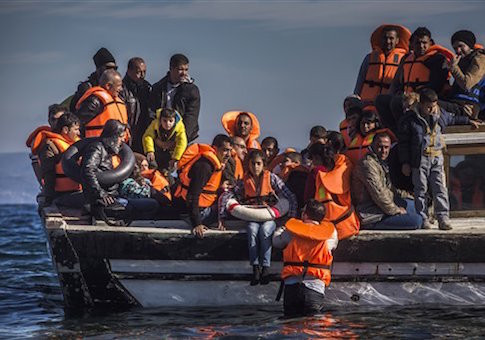JERUSALEM—More than half of Syria’s population has been swept up by the country’s civil war in the past five years—either killed, wounded or displaced, according to a report by the Syrian Center for Policy Research.
Some 400,000 Syrians, soldiers and civilians, have been killed as a direct result of military action, the report said, and another 70,000 died as a result of poor health care in the ravaged country, shortage of medicine and food and lack of access to clean water. In addition, 1.9 million persons have been wounded. Together, these casualties make up 11.5 percent of Syria’s pre-war population of some 22 million.
Additionally, most of the country’s capital, infrastructure and institutions have been "almost totally destroyed." The report, soon to be released, was made available to the Guardian.
The casualty figures given in the report are almost double those published by the United Nations last August, which gave the number of dead as "over 250,000." The UN report put the number of displaced Syrians at 12 million, which includes those who have become refugees in foreign countries.
The displaced figure has gone up sharply in the past week following intensive Russian bombing of the major city of Aleppo. Turkish officials said yesterday that 50,000 residents of the city have reached the Turkish border seeking shelter. If bombing destroys the entire city, the officials said, the figure could rise by 1.5 million. Aleppo is still home to two million people but water supply and other necessities are endangered.
Secretary of State John Kerry and Russian Foreign Minister Sergy Lavrov were to meet in Munich today following a reported Russian proposal to set March 1 for a ceasefire in Syria. A UN diplomatic source said that Russia was "stringing Kerry along" to achieve diplomatic cover for ensuring that Syrian President Bashar al-Assad wins the war and does not have to compromise at the negotiating table.
European countries are anxious for a swift resolution of the Syrian tragedy in order to head off continued flooding of the continent with war refugees. With the arrival of spring, the Mediterranean becomes calmer, making it easier for migrants to make the boat journey from Turkey to Greek islands. Some analysts suggest that the Russian bombing is intended to spur further Syrian emigration in order to win international recognition of Russia’s claims on the Ukraine in return for Moscow calling off its air force in Syria.
Life expectancy in Syria, for those who manage to stay alive, has declined from 70 before the conflict to 55.4 years. Forty-five percent of the pre-war population has been forced to move—6.3 million to new locations within Syria and four million who have fled overseas. Some 14 million Syrians have lost their livelihood and damage to the country’s economy during the protracted conflict is estimated by the UN to be $255 billion.
The UN Refugee Agency this week published figures showing that 900,000 Syrians applied for asylum in Europe between April 2011 and December 2015. Nearly two thirds of these applications were made in Germany and Serbia and nearly a third in Sweden, Denmark, the Netherlands, Hungary, and Austria.
